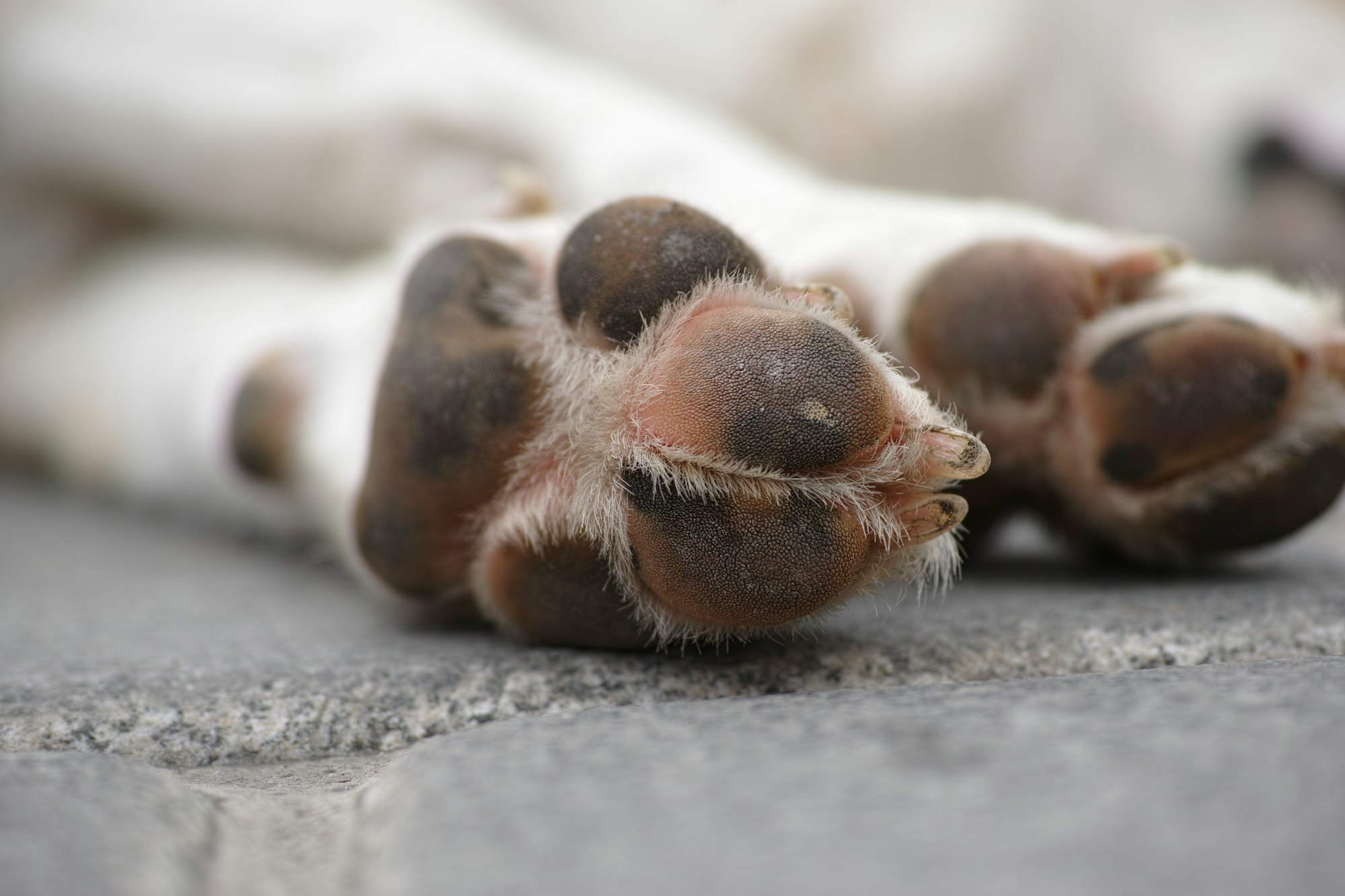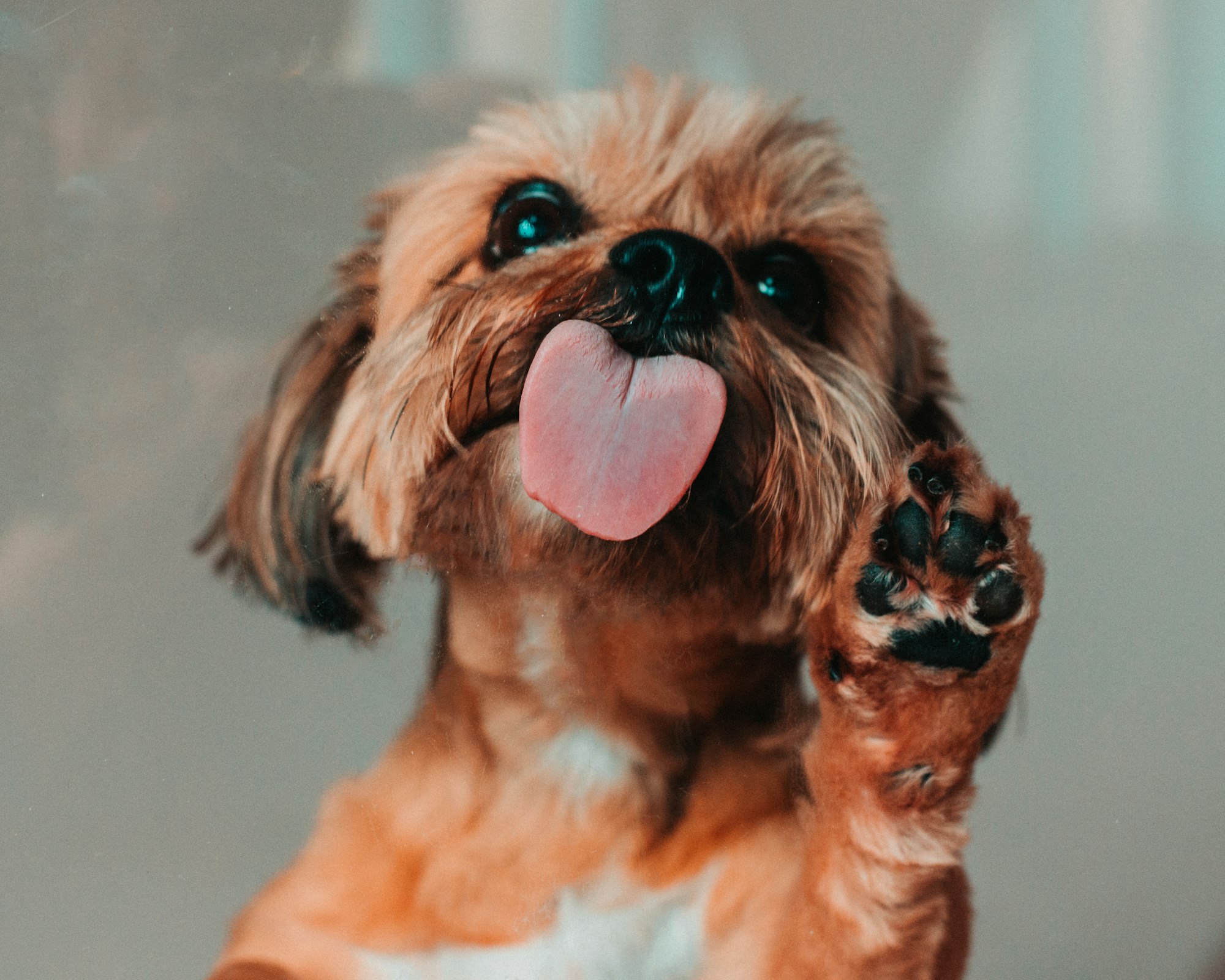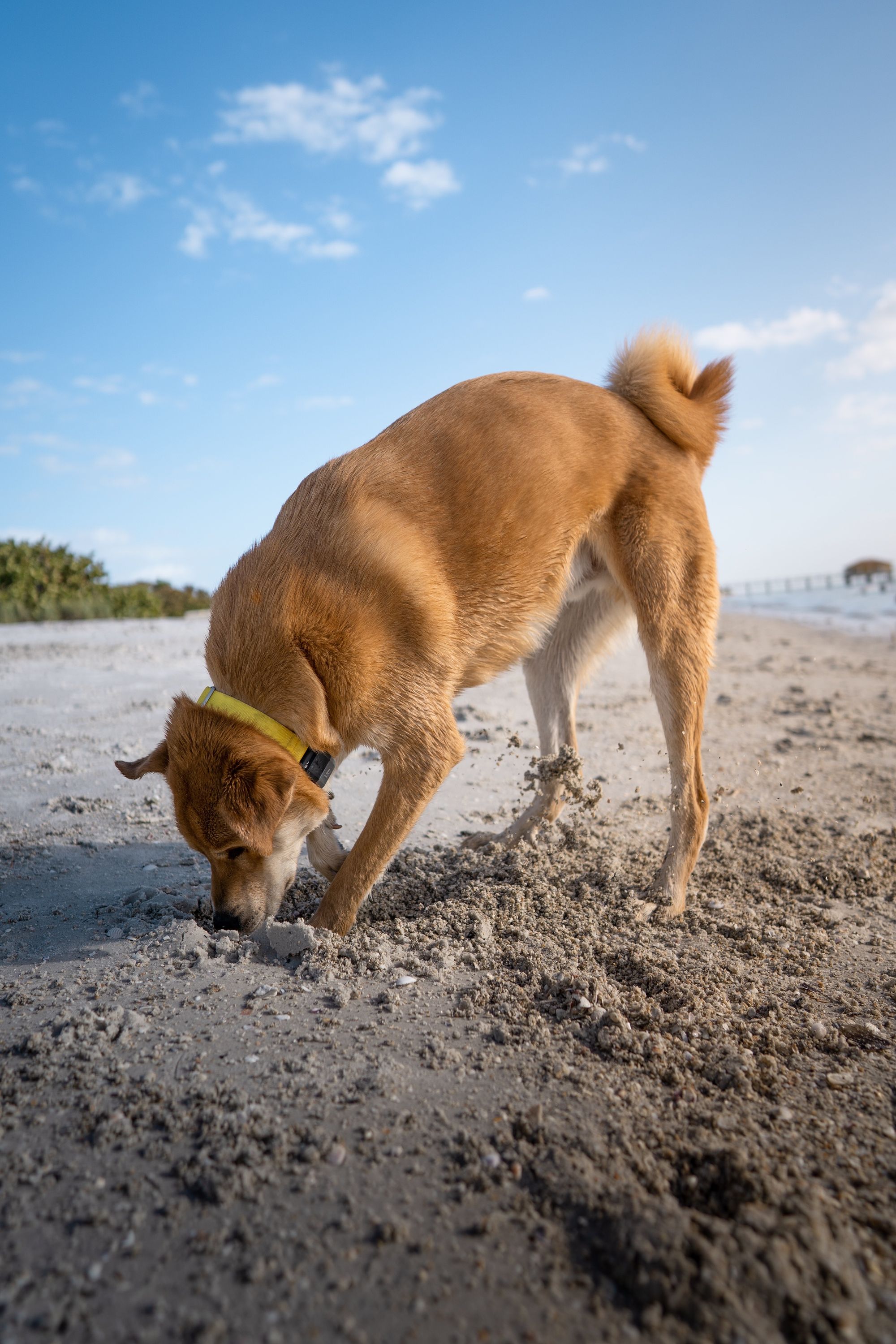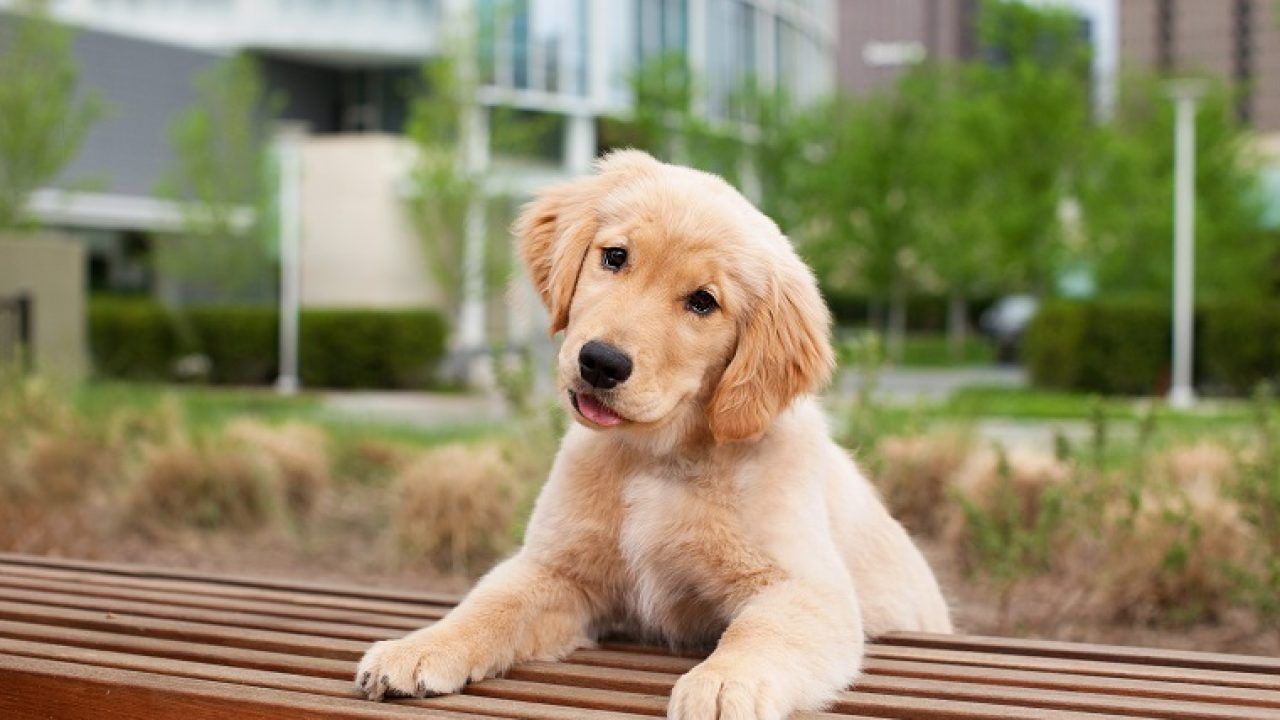Dog paws are one of dog care's most overlooked yet crucial parts. If you have a puppy who licks or bites its feet, you might be wondering whether that's normal and what you should do about it.
Here is a complete guide to dog paws, including the parts and shapes of regular dog paws, what unhealthy dog paws look like, and how to maintain your pup's healthy paws.

Everything You Need to Know About Dog Paws
Before we talk about the overall shapes and healthiness of dog paws, you must know the general anatomy of your pup's paws. Each of these parts is important for your pup's health, from toes to pads. Here are the
- Metacarpal pad: the large pad on the bottom of the foot, which holds most of the dog's weight
- Digital pads: The smaller pads on the toes (sometimes known as toe beans)
- Carpal pad: the extra pad further up your dog's ankle, only on the front legs of your dog.
- Claws: your dogs' claws, meant for digging and scratching
- Dewclaws: the smaller claw on the side of the paw, similar to (but not the same as a thumb). Some dogs have two dewclaws, like the Beauchoren.
Each of these parts is important to your pup's balance, support, and overall paw health. In addition, the shape of the paws and the parts have evolved to help dogs survive and thrive in their natural setting.
The Three Shapes of Dog Paws
Dog paws have three main shapes, evolved by breeds to better suit the dog’s jobs and terrain. Some shapes are better suited for climbing and rough terrain, while others are for indoor and traditional lap dogs.
However, these shapes are not exclusive, and breed mixes are known to have more than one shape. If you have a purebred dog, he is likely to have only one type of paw shape.
Cat Feet (You read that right!)
Although it seems odd, a cat's foot is one of the most common shapes of a dog paw. These dog paws look like a cat's feet, with round pads and rounded toes. Most dogs with cat foot paws have equally sized toes as well.
Common breeds with cat feet include Akitas, Doberman Pinschers, and Newfoundlands. These paws help dogs with stability and durability for long treks and workdays. They are often found with webbing to help increase the stability of the paw while digging or swimming.
Hare Feet
Dogs with "hare feet" often have two longer middle toes. They look like rabbits' feet, and like rabbits, dogs with hare feet paws were built for bursts of speed and sprinting. Greyhounds, Samoyeds, and whippets are some breeds with hare feet.
Some mixed breeds with hare feet also have webbing between their toes, but most purebred racing dogs will have little to no webbing. The longer middle toes enable these pups to sprint for short bursts.
Webbed Feet
All-terrain, rescue, or hunting dogs often have webbing between each toe. It can vary depending on the breed, and webbed paws might be cat or hare shaped. However, common breeds with webbed feet include Portuguese water dogs, Bernese mountain dogs, and dachshunds.
Webbing enables dogs to swim, climb, and dig more easily. Webbing is essential for breeds trained and bred to work in these conditions. However, many mixed breeds have some webbing as well.
Healthy Dog Paws vs. Unhealthy Dog Paws?
If you're worried about your dog's paws, the best thing you can do is look at them. Healthy dog paws aren't easy to pick out, but you can easily tell when your dog's paws have problems. If any of these symptoms are there, take action and help your pup get more comfortable:
- Dry or cracked paw pads (DIY Paw Balm)
- Long, broken, or curled claws
- Red or inflamed paws
- Limping, whining, or favoring a paw
- Excessive licking or biting of the paws
- Discharge, scabbing, bleeding, or smell
While some of these are minor issues, a pet in obvious pain or with any paw discharge should be taken to the vet immediately. You can use a pet-friendly moisturizer if your pet has dry or rough paw pads.

Mmm.. That Corn Chip Smell
If you own a dog, you've likely noticed the signature "corn chip smell" of your pup's paws. What is it? Do you also call it Frito Paws or is that just me? Is it normal? And why do they still smell like that even after a bath?
The corn chip smell is a natural smell for most dogs' paws. It's a natural byproduct of the yeast and bacteria that gather in the dog's paws. Although this sounds scary, it's fine in small amounts. Dogs keep their paws wet and clean by licking them, allowing small amounts of the bacteria to grow.
It's ideal to have no corn chip smell for your home and the dog's health. However, a small number of bacteria will likely grow between your dog's toes, and it's not a dangerous substance unless it becomes excessive.
As long as the smell isn't excessive or your dog isn't constantly licking its paws, you don't have to worry about the number of bacteria in your dog's paws. If you see your pup constantly licking or the smell becomes too much, talk to a vet about an anti-fungal medicine to keep the growth at bay.
Routine Maintenance For Your Dog's Paws
Of course, the best way to ensure that your dog's paws are healthy is to take good care of them. Here are a few maintenance items you can routinely do to ensure that your pup's paws stay healthy.
The most important thing you can do for your dog's paws is clip the claws. Whether you do this at home or leave it to a professional, keeping a dog's claws from overgrowing is crucial. Active or outdoor dogs might naturally break off long toenails, but at-home grooming can prevent cracks and unhealthy dog claws.
To prevent the corn chip smell, excessive bacteria and yeast growth, or infections, routine washing and massaging of your dog's paws are necessary. Starting a regular bath and massage schedule when they are young will encourage healthy feet and decrease the odds of smelly or dirty paws.

Conclusion
Now that you know about dog paws, you won't have to worry too much about keeping your pup's paws and claws healthy. Look out for excessive licking, smells, or other worrying behavior, and regularly bathe your dog. With those steps, you can rely on nature and your dog to keep her paws healthy and clean.
Get more expert advice on pet-parenting by visiting the Off Leash blog at TryFi.com.

